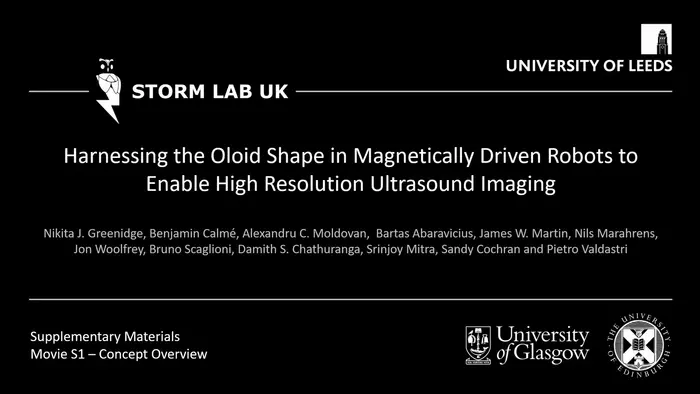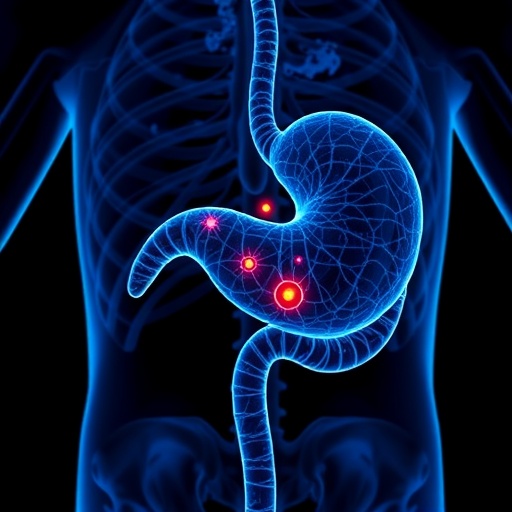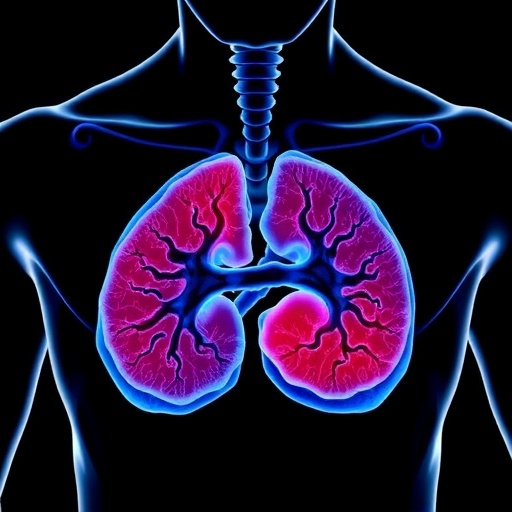
A groundbreaking advancement in medical technology has emerged from the University of Leeds, where researchers have developed a tiny magnetic robot capable of performing high-resolution 3D scans deep within the human body. This revolutionary tool could potentially transform early cancer detection processes, particularly for colorectal cancer, which remains one of the leading causes of cancer-related deaths globally. The team’s innovative approach combines advanced robotics with sophisticated imaging techniques, showcasing the promise of interdisciplinary collaboration to solve pressing healthcare challenges.
The research team, led by engineers at the University of Leeds, describes this technological breakthrough as the first instance where high-resolution 3D ultrasound images have been successfully captured from within the gastrointestinal tract using a probe. This pioneering technology paves the way for non-invasive procedures termed ‘virtual biopsies’, which can provide immediate diagnostic data. Such a capability reduces the need for painful biopsies and the associated waiting time for results, thus streamlining the diagnosis and treatment of various cancer types.
Central to the success of this research is the adoption of the oloid, a distinct 3D shape that affords the magnetic robot an unprecedented range of movement. This unique rolling motion is crucial for precise navigation and imaging within the complex architecture of the human body. The oloid’s geometry allows the magnetic medical robot to achieve controlled rolling and sweeping motions, which are essential for acquiring accurate images. The successful integration of this shape into a new form of magnetic flexible endoscope signifies a substantial advancement in the field.
A paper detailing these findings was published in Science Robotics, where the research group elucidated the oloid’s integration with a miniature, high-frequency imaging device. This combination has enabled the capture of detailed 3D ultrasound images of internal tissues, offering a snapshot of the gastrointestinal landscape that was previously unattainable. The implications of this technology are profound; it holds the potential to detect lesions and provide critical information about the state of internal tissues without the invasiveness and discomfort of traditional methods.
The collaborative effort behind this innovation involved several esteemed institutions, including the University of Leeds, the University of Glasgow, and the University of Edinburgh, each contributing their unique expertise. While Leeds led the robotics development and the probe integration, Glasgow and Edinburgh played pivotal roles in enhancing the imaging components of the system. This partnership underscores the power of collaborative research in driving technological advancements that can significantly impact patient care.
According to Professor Pietro Valdastri, a key figure in this research and the Director of the STORM Lab at the University of Leeds, the ability to reconstruct a 3D ultrasound image from a probe within the gastrointestinal tract marks a historic achievement in medical imaging. Current diagnosis procedures for colorectal cancer typically involve invasive tissue sample removal followed by a laborious wait for laboratory results; this new technology promises to offer immediate insights during a single medical visit.
Notably, the imaging device employed in this study operates at a frequency of 28 MHz, achieving a level of resolution that allows for the visualization of minute tissue structures. This high-resolution ultrasound differs from traditional ultrasound methods typically used in obstetric scenarios or organ examinations. The enhanced imaging capability enables clinicians to identify abnormal tissue characteristics at a microscopic level, significantly elevating the diagnostic process.
While the current research concentrated on the gastrointestinal tract, the oloid’s rolling capabilities hint at a broader application for magnetic medical robots. The design could facilitate similar advancements in various areas of the body, leading to a wider range of non-invasive diagnostic and therapeutic options. Moreover, the research team is actively preparing to collect data necessary for human trials, hopeful to embark on this next critical phase by 2026.
The implications of such medical technology extend beyond logistical efficiency; they also address the psychological burden often placed on patients awaiting biopsy results. The innovative combination of automatic navigation facilitated by the oloid structure, along with real-time imaging, allows physicians to carry out diagnosis and treatment in tandem. This holistic approach could revolutionize patient experiences and outcomes, particularly in fields where timely intervention is crucial.
Researchers believe that the enhanced dexterity and functionality of magnetic endoscopic technologies could also mitigate current disparities in colonoscopy procedures. Standard colonoscopies are often more challenging for female patients, which tends to lead to incomplete examinations. By bridging the gap through more effective and patient-friendly procedures, the potential for improved health outcomes becomes significantly greater.
As the medical community anticipates the rollout of this technology, funding from various institutions, such as the Engineering and Physical Sciences Research Council (EPSRC) and the European Research Council (ERC), will support the further refinement and testing of the oloid magnetic endoscope. Such interdisciplinary funding is crucial in bringing innovative scientific research to practical fruition.
In summation, the development of this tiny magnetic robot signifies a notable leap forward in the realm of medical diagnostics. By merging sophisticated robotic technology with advanced imaging techniques, researchers are not only enhancing cancer detection capabilities but are also improving the overall patient experience. With further advancements and studies planned, the future holds promise for the integration of such cutting-edge technology into regular medical practice.
Such innovations serve as a testament to the potential of scientific research to address serious health issues through creativity and collaboration. As these technologies evolve, they may very well redefine how non-invasive procedures are conducted and how effectively healthcare can address critical challenges faced by patients around the world.
Subject of Research: Magnetic medical robots
Article Title: Harnessing the oloid shape in magnetically driven robots to enable high resolution ultrasound imaging
News Publication Date: 26-Mar-2025
Web References: Science Robotics
References: DOI: 10.1126/scirobotics.adq4198
Image Credits: STORM Lab, University of Leeds
Keywords: Medical robots, Ultrasound, Cancer research, Colorectal cancer, Biopsies, Robot navigation
Tags: advanced medical imaging techniquescolorectal cancer detectioncompact rolling robotearly cancer detection methodsgastrointestinal tract imaginghigh-resolution 3D scansinterdisciplinary healthcare innovationmagnetic robotics in medicinenon-invasive cancer diagnosisoloid shape in roboticsUniversity of Leeds medical researchvirtual biopsies technology





